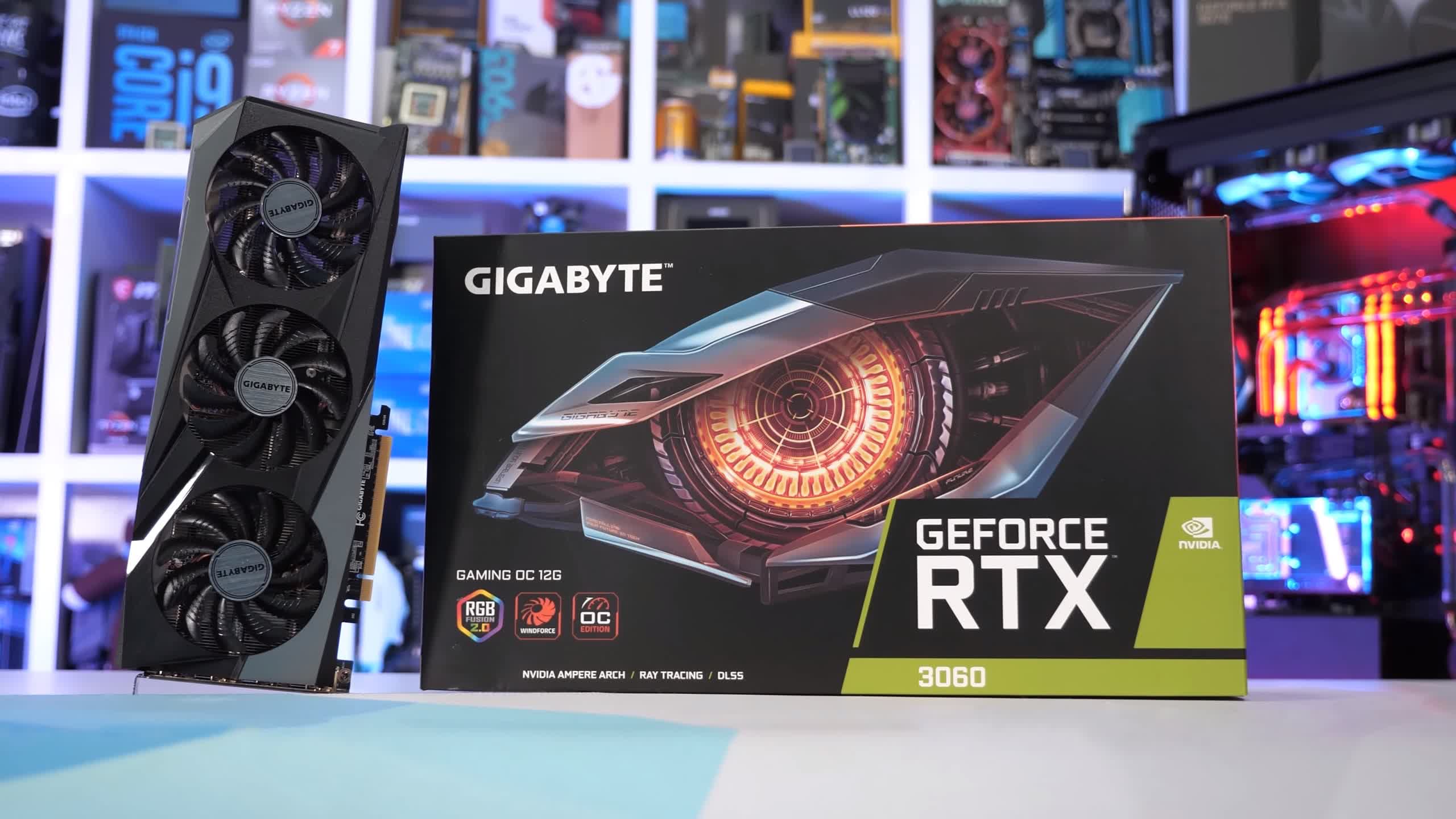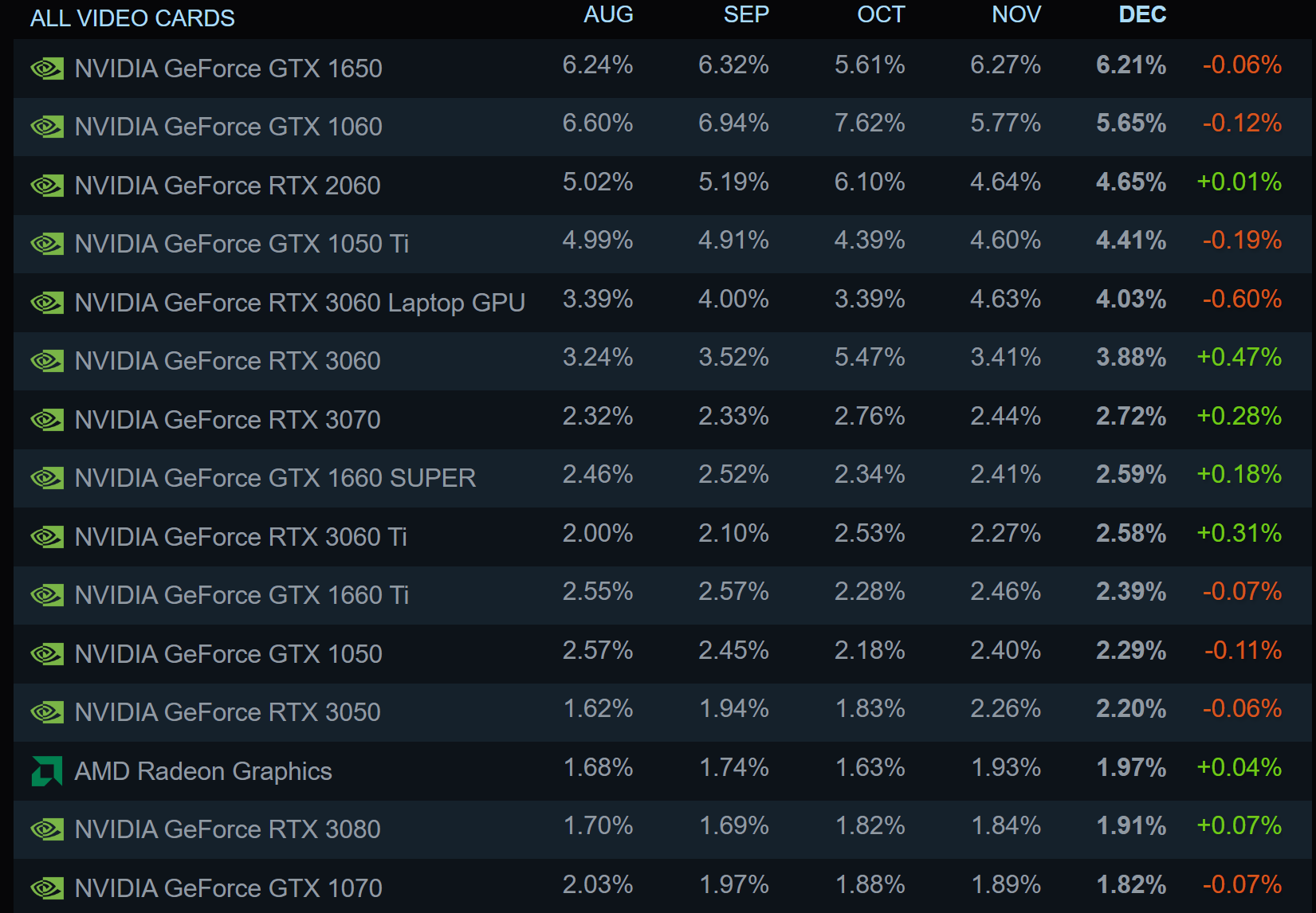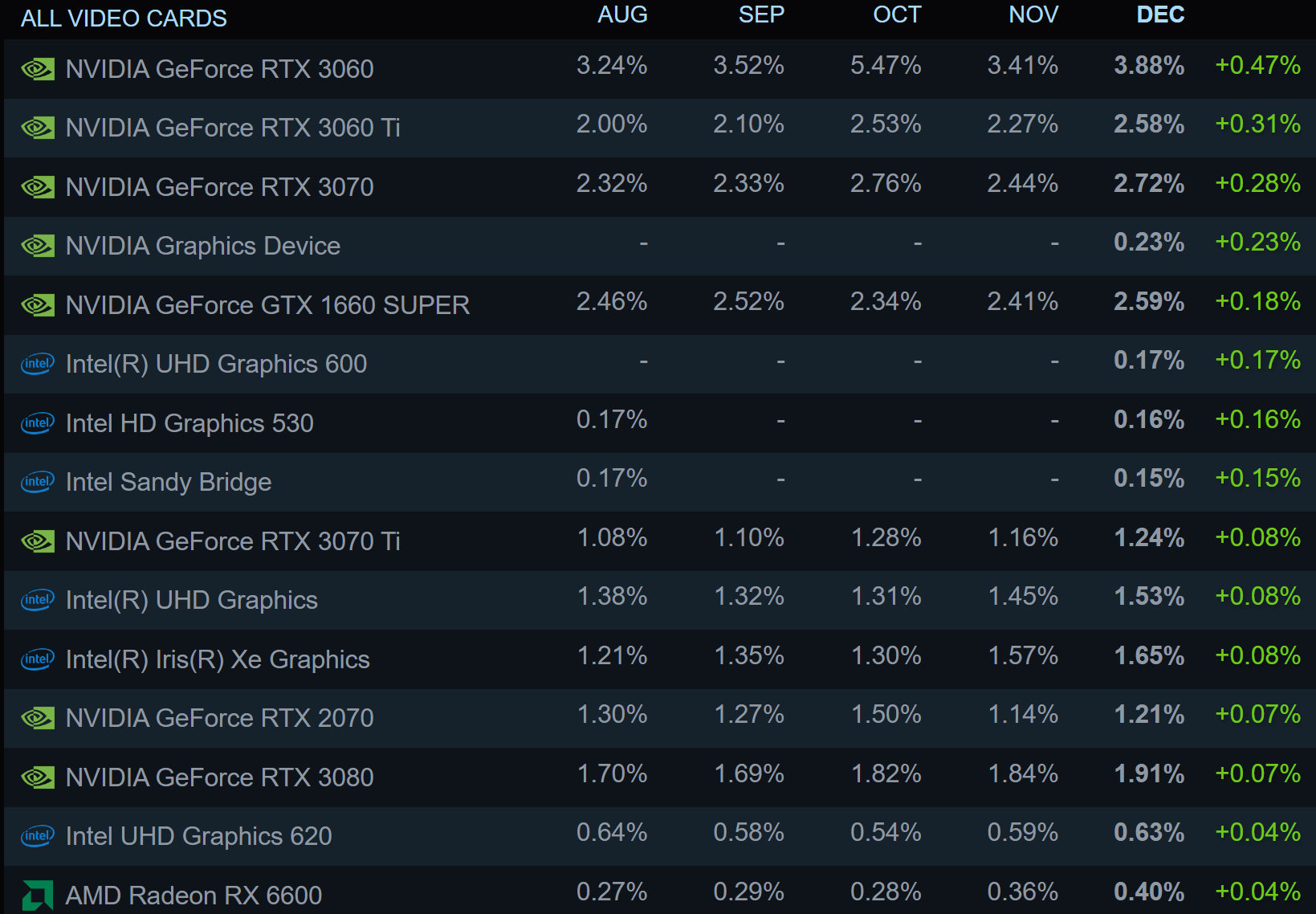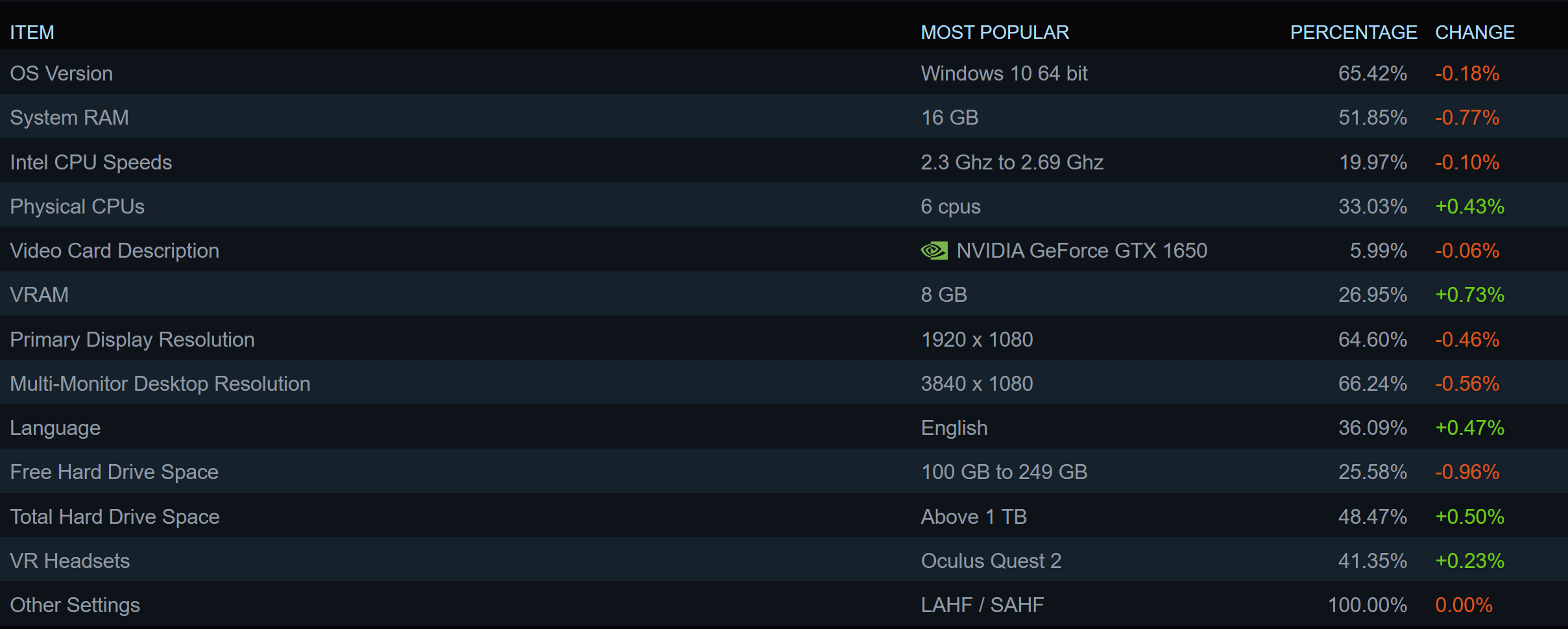In a nutshell: December's Steam hardware & software survey has landed, giving us an idea of what PC components participants received over the holidays. The previous month was a good one for Nvidia's last-gen Ampere line, especially the RTX 3060, which is quickly moving up the most-popular-GPU chart.
November's Steam survey revealed that a new graphics card topped the GPU chart for the first time since 2018. The GTX 1650 remained number one in December despite a slight (-0.06%) decline, but it might soon be feeling pressure from a much newer and more powerful card: the RTX 3060.
The RTX 3060 saw the biggest gains last month, jumping up +0.47%. It was followed in second place by its Ti variant (+0.31%).
It appears that Ampere was on a lot of participants' Christmas wishlists: the RTX 3070 was the third best-performer with a +0.28% increase, its Ti version was ninth (+0.08%), and the RTX 3080 was thirteenth (+0.07%).
The RTX 4000 series has yet to appear on the chart, unsurprisingly, given its price and lower-than-expected sales. The Radeon RX 7900 series, which admittedly only arrived in the middle of December, is also absent. It'll be interesting to see if the RX 7900 XTX's potentially faulty vapor chamber affects its popularity.
In the CPU category, AMD's long-running trend of gaining and then losing share continued with a -0.71% decline, putting its total share at 32.16%. A recent Mindfactory report showed team red sold more CPUs than Intel last month---in Germany, at least---so the company is unlikely to be concerned by Steam's latest figures.
Elsewhere, Windows 11 continues to erode Windows 10's share after the former gained +0.44% more users, taking its total share to 28.42%. And after clinging on for years despite official (not paid-for) support ending, Windows 7 kept sliding toward obscurity on gaming machines with a -0.22% decline, dropping its share to just 1.66%.
The rest of the category leaders remain unchanged: the Oculus Quest 2 is still the most popular VR headset by far, most people use a 1920 x 1080 resolution and have 8GB of RAM (despite an increasing number of games asking for more), and a third of participants have six physical CPU cores.




